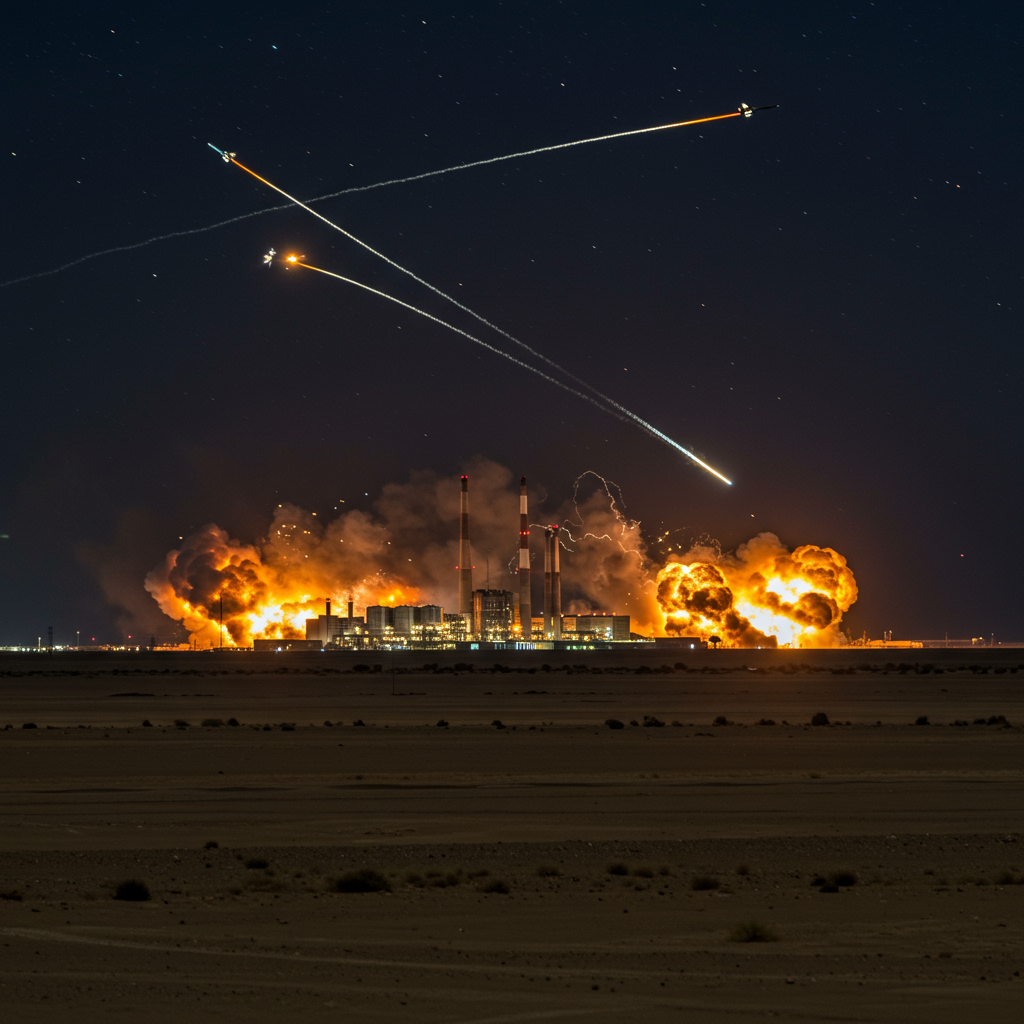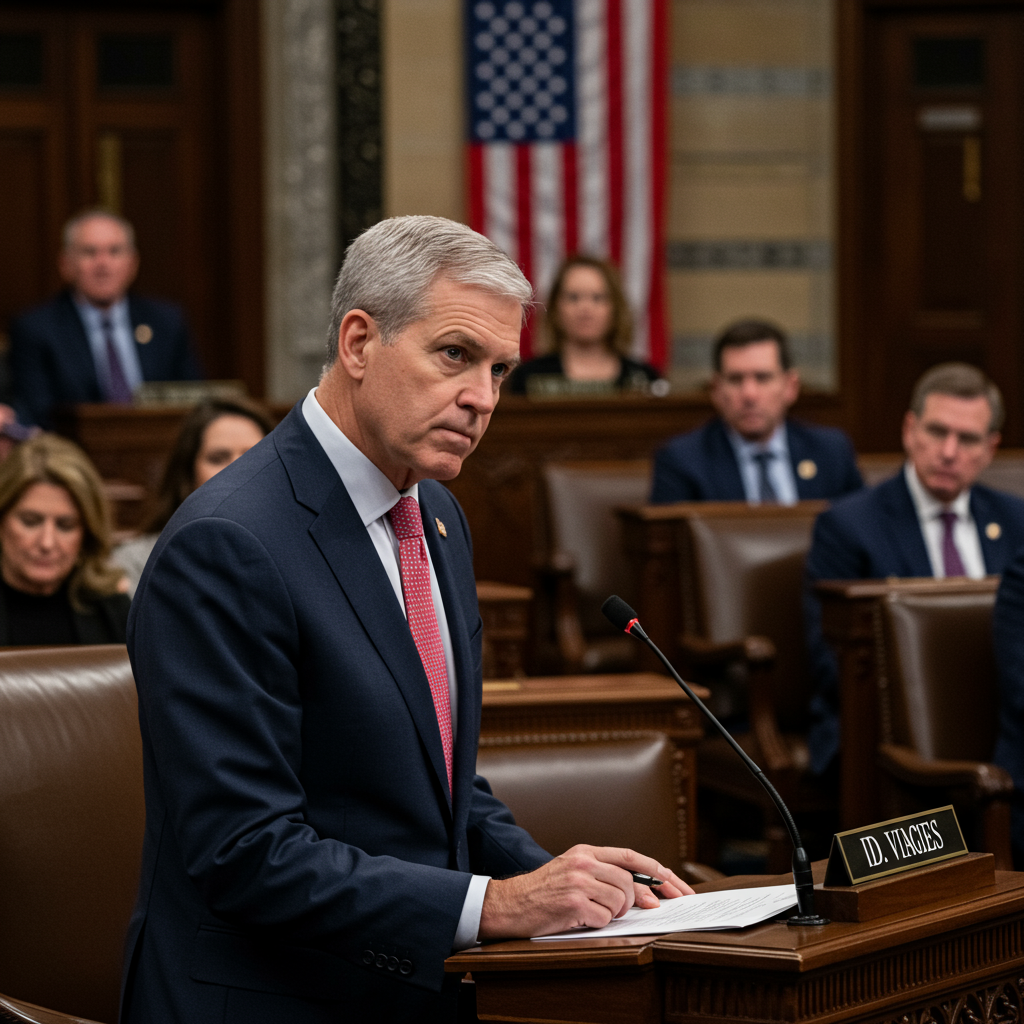Geopolitical tensions surrounding the Ukraine conflict escalated this week as Ukrainian President Volodymyr Zelenskyy reported inconclusive talks with US President Donald Trump regarding Kyiv’s urgent request for long-range Tomahawk missiles. This diplomatic crossroads unfolds amidst intensified military actions, critical nuclear safety repairs, and a renewed European commitment to Ukraine’s defense. The ongoing war, now in its third year, presents a complex tapestry of battlefield shifts and high-stakes international negotiations, leaving the path to a durable peace fraught with uncertainty and strategic maneuvering.
Trump’s Tomahawk Stance: A Pivotal Point for Ukraine
US President Donald Trump’s recent meeting with Ukrainian President Volodymyr Zelenskyy concluded without a definitive answer on Kyiv’s plea for advanced long-range Ukraine Tomahawk missiles. Zelenskyy indicated that Trump “didn’t say no” but also “didn’t say yes,” leaving Ukraine hopeful yet in limbo. This ambivalence underscores the delicate balance of US foreign policy, particularly following reports of a call between Trump and Russian President Vladimir Putin. Putin’s foreign policy adviser, Yuri Ushakov, reportedly warned Trump that Tomahawk deliveries, while not battlefield game-changers, would “cause substantial damage” to US-Russia relations.
Zelenskyy’s Plea for Long-Range Power
Ukraine views these Tomahawk missiles as essential for striking targets deep within Russian territory, effectively mirroring Moscow’s long-range capabilities. The Ukrainian leader emphasized Russia’s apprehension about these potent weapons, highlighting their strategic importance for Kyiv. This request is not isolated but rather part of Ukraine’s broader strategy to enhance its defense capacity and push back against Russian aggression. The potential transfer of such powerful armaments remains a sensitive point in international diplomacy, directly influencing the dynamics of the ongoing conflict.
The Bering Strait Tunnel and Diplomatic Ambivalence
Adding another layer of intrigue to the US-Russia-Ukraine dynamic, a proposal surfaced for an ambitious tunnel connecting Russia and Alaska. Russian investment envoy Kirill Dmitriev suggested the $8 billion, 70-mile project as a “symbol of unity.” President Trump described the idea as “interesting,” yet Zelenskyy, present during Trump’s comments, unequivocally stated, “I’m not happy with it.” This exchange highlights the deep-seated mistrust between Ukraine and Russia, even as Trump positions himself as a mediator for a peace deal, repeatedly noting the “bad blood” between Putin and Zelenskyy. This tunnel proposal, while seemingly tangential, underscores the complex geopolitical considerations influencing Trump’s approach to the conflict.
European Allies Reaffirm Support Amidst Uncertainty
While US support for Ukraine Tomahawk missiles remains uncertain, European leaders have reaffirmed their commitment to Kyiv. Following his meeting with President Trump, Zelenskyy held a “productive” call with British Prime Minister Keir Starmer and other European allies.
“Productive” Calls and Unwavering Commitment
British Prime Minister Keir Starmer reiterated the UK’s “unwavering commitment” to Ukraine, pledging continued humanitarian aid and military support toward achieving a “just and lasting peace.” The call included leaders from Germany, Finland, Italy, Norway, and Poland, alongside key figures like European Commission President Ursula von der Leyen and NATO Secretary-General Mark Rutte. Zelenskyy used the opportunity to share details of his discussions with Trump, underscoring the collective European priority to protect lives, guarantee Ukraine’s security, and strengthen Europe as a whole against Russian aggression. These diplomatic efforts highlight a concerted push by European nations to provide a steadfast backstop for Ukraine.
Escalating Battlefield Actions and Infrastructure Strikes
On the ground, the conflict continues with both sides actively targeting energy infrastructure. Russia has intensified its attacks, seeking to disrupt Ukraine’s energy supply ahead of the colder months, while Ukraine aims to cripple Russia’s ability to fund the war.
Russia’s Renewed Assault on Ukrainian Energy
Overnight to Saturday, Russian forces launched renewed attacks on Ukraine’s energy infrastructure. Chuhuiv, in the eastern Kharkiv region, sustained over ten strikes, causing widespread power outages. In the northern Chernihiv region, approximately 17,000 customers lost power after an energy facility in the Koriukivka district was hit. Ukraine’s air force reported that Russia deployed 164 explosive-laden drones, with 136 successfully repelled, but 27 striking targets across 12 locations. Meanwhile, Russia claimed to have seized the village of Pleshchiivka in the Donetsk region, a claim that remains unverified by independent sources. These sustained attacks underscore the critical role of energy security in the ongoing conflict.
Ukraine Targets Russian-Controlled Areas and Production
Ukraine, too, has maintained pressure on Russian-controlled territories and military-industrial targets. A Ukrainian drone attack in the Russian-occupied part of the Kherson region reportedly killed two people in a temporary accommodation center, according to Russian-installed governor Vladimir Saldo. Separately, a large explosion at the Avangard explosives factory in Sterlitamak, Russia, resulted in three fatalities and five injuries. While a local official refuted drone attack speculation, Russian media reported the plant produced weapons and ammunition for the war. This incident follows a September Ukrainian drone attack on a Gazprom oil refinery in Bashkortostan, part of Kyiv’s broader strategy to reduce Russian energy revenues.
Zaporizhzhia Nuclear Plant: A Glimmer of Safety Progress
Amidst the conflict, critical efforts are underway to address nuclear safety concerns at the Russian-held Zaporizhzhia nuclear plant. This facility, Europe’s largest, has been a focal point of international concern since its occupation by Russian forces in February 2022.
Power Line Repairs Underway After Outage
Repair work has finally commenced on the power lines to the Zaporizhzhia nuclear plant following a four-week outage. International Atomic Energy Agency (IAEA) Director General Rafael Grossi confirmed these repairs, emphasizing their “crucial” importance for nuclear safety and security. Despite the plant’s reactors being shut down, they still require external power for cooling, with diesel generators serving as a backup. The last high-voltage power line failed on September 23, with fighting previously preventing necessary repairs. Both the IAEA and Russia have now confirmed that conditions permit this vital work to proceed, offering a small but significant step towards reducing the risk of a nuclear incident.
The Evolving Landscape of Drone Warfare and Geopolitical Strategy
The ongoing conflict has become a crucible for technological innovation, particularly in drone warfare, and has reshaped geopolitical strategies for a durable peace.
Ukraine’s Technological Edge and Joint Production
Ukraine has demonstrated remarkable advancement in drone technology, captivating the attention of Western partners. The Trump administration is reportedly engaged in early negotiations for a potential $50 billion, five-year deal to jointly produce ten million drones annually, effectively doubling Ukraine’s projected 2026 output. This signifies a “revolution in military affairs,” where victory increasingly hinges on faster technological evolution. Ukraine’s military is prioritizing weaponized FPV drones for the front lines, AI-powered interceptor drones, and deep-strike drones to target Russian infrastructure like oil refineries, impacting an estimated 17-38% of Russian refinery production. This strategic focus on drone technology offers a new dimension to military aid discussions beyond traditional armaments like Ukraine Tomahawk missiles.
Redefining Peace: Scenarios and Strategic Shifts
Experts are increasingly defining a “fair and durable peace” as the most plausible outcome for Ukraine, even if it involves temporary territorial loss. This scenario hinges on a renewed US security backstop, a robust European military presence, and an accelerated path to EU membership. Trump’s recent diplomatic approach suggests a potential shift, including leveraging over $300 billion in blocked Russian assets for a $90 billion long-term loan fund for Ukraine. He also advocated for punitive tariffs against Russia and nations purchasing its oil. These measures, combined with enhanced access to US weapons and a joint drone production deal, could significantly alter the balance of power. Zelenskyy’s agreement to meet Putin without preconditions, potentially at the G20 summit, indicates a willingness to explore diplomatic avenues within this evolving strategic framework, with some analysts suggesting Ukraine wants to help Trump solidify a historic legacy through a decisive peace.
Frequently Asked Questions
What is the current status of Ukraine’s request for US Tomahawk missiles?
Ukrainian President Volodymyr Zelenskyy met with US President Donald Trump, but the outcome regarding Ukraine Tomahawk missiles was inconclusive. Zelenskyy stated Trump “didn’t say no” but “didn’t say yes” to the request. Trump’s reticence reportedly follows a warning from Russian President Vladimir Putin about potential damage to US-Russia relations if the missiles are supplied. Kyiv remains hopeful for their delivery, viewing them as crucial for striking targets within Russia.
Where are the primary military and diplomatic hotspots in the Ukraine conflict as of October 2025?
Key military hotspots include the eastern Kharkiv region (specifically Chuhuiv) and the northern Chernihiv region, targeted by Russian energy infrastructure attacks. The Donetsk region sees ongoing ground fighting, with Russia claiming seizure of Pleshchiivka. The Russian-occupied Kherson region has seen Ukrainian drone attacks. Diplomatically, Washington D.C. (for US-Ukraine talks) and European capitals (for allied support discussions) are central. The Zaporizhzhia nuclear plant remains a critical location for nuclear safety efforts.
How might Ukraine’s advanced drone technology impact future military aid decisions from the US?
Ukraine’s rapid advancements in drone technology are significantly impacting military aid discussions. The Trump administration is reportedly considering a substantial $50 billion, five-year deal for joint drone production, aiming for ten million units annually. This shift towards fostering Ukraine’s indigenous high-tech defense capabilities, rather than solely relying on direct arms transfers like Ukraine Tomahawk missiles, suggests a new strategic focus. It emphasizes a “revolution in military affairs” where technological superiority and joint manufacturing could become a cornerstone of future US support, enabling Ukraine to both defend itself and contribute to Western defense supply chains.
The intricate dynamics of the Ukraine conflict continue to evolve, marked by diplomatic uncertainties surrounding Ukraine Tomahawk missiles, intensified military engagements, and crucial progress in nuclear safety. The shifting geopolitical landscape, combined with Ukraine’s growing technological prowess in drone warfare, signals a complex future for both conflict resolution and international relations. As leaders navigate peace talks and ongoing hostilities, the choices made now will profoundly shape the trajectory of this pivotal European conflict.


